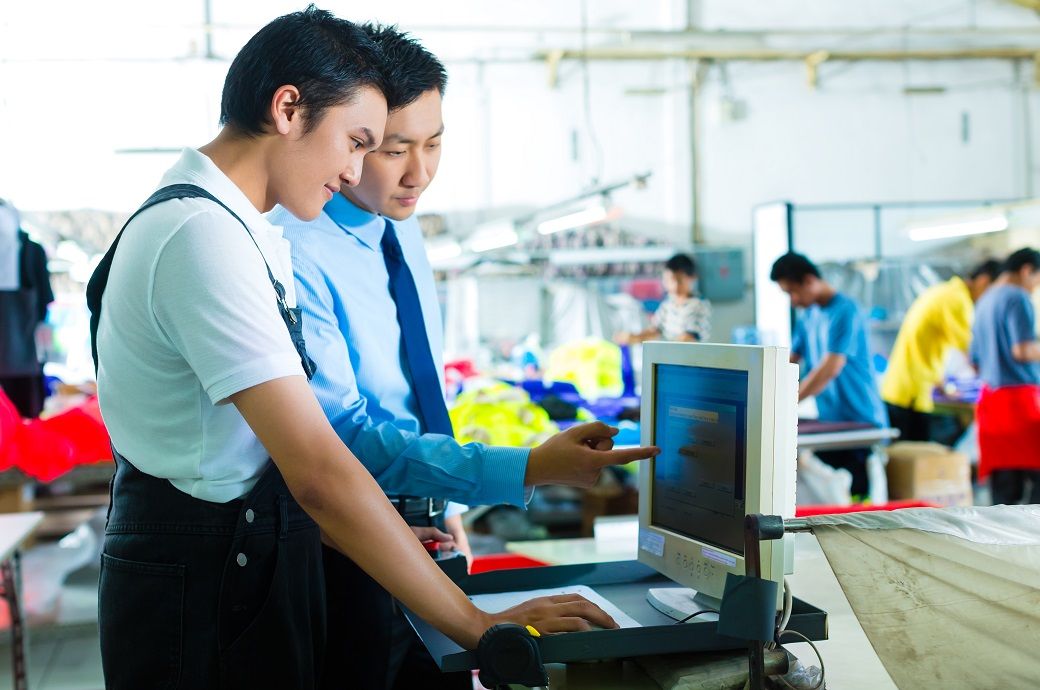
PMI is a composite indicator designed to provide a single-figure snapshot of operating conditions in the manufacturing economy.
The manufacturing sector in China saw a slight deterioration in overall business during August 2022 as power cuts and temporary factory closures weighed on output and sales. Production rose at the softest pace for three months, while intakes of new work fell for the first time since May. Subdued demand conditions led firms to cut back slightly on their purchasing activity and inventory levels, while workforce numbers fell modestly. Lower prices for some raw materials, notably metals and chemicals, led to the first fall in input costs since May 2020, which led firms to cut their output charges for the fourth month in a row.
Contributing to the sub-50.0 PMI reading was a renewed fall in total new business at Chinese manufacturers. Though only slight, it marked the first drop in sales for three months. Panellists commented that generally subdued market conditions, power cuts, and lingering COVID-19 impacts had all dampened overall sales. Foreign demand also fell back into contraction, with new export business decreasing modestly.
Production growth meanwhile eased to a marginal pace that was the softest seen for three months. While there were reports that output was still recovering from pandemic-related disruption, power supply issues and temporary factory closures due to the recent heatwave had constrained overall growth. Staffing levels at Chinese manufacturers fell for the fifth month in a row, as a number of firms mentioned company downsizing policies due to lower intakes of new work. The rate of job shedding eased from July, however, and was only modest. At the same time, backlogs of work were stable in August, following two months of decline.
According to panel members, disruption to power supplies and production schedules had limited their ability to process and complete outstanding business. Muted customer demand impacted buying activity, which fell for the first time in three months, albeit only slightly. At the same time, firms readjusted their inventory levels and registered mild drops in stocks of both post- and preproduction goods.
Vendor performance deteriorated for the second month in a row, albeit at a marginal rate. Power cuts at suppliers and lingering COVID-19 disruption were cited as key factors weighing on vendor capacity and lead times in August. Average input costs fell for the first time since May 2020 during August. Though modest, the rate of reduction was the quickest seen since the start of 2016. Firms often stated that lower prices for some raw materials had helped to pull down expenses, with metals and chemicals mentioned in particular.
Efforts to boost competitiveness and attract sales meant that savings were partially passed onto clients, with selling prices falling at the quickest rate since May. Although Chinese manufacturing firms were generally confident that output would rise over the next year, the level of sentiment was unchanged from July and below the historical trend. Panellists stated that concerns over how long the pandemic will disrupt operations, a deteriorating global economic outlook, and sluggish demand conditions all weighed on their projections for the year ahead, added the report.
“The Caixin China General Manufacturing PMI came in at 49.5 in August, down from 50.4 the previous month. A resurgence of Covid-19 infections, coupled with a prolonged heat wave, weighed on the manufacturing sector. Supply chains across the sector remained stable in August. The Covid-19 flare-ups and power cuts mildly affected logistics, with average lead times for inputs increasing at a marginal pace. Driven by weakness in the overall market, manufacturers kept lower stocks of raw materials and finished goods,” said Dr. Wang Zhe, senior economist at Caixin Insight Group.
The Caixin China General Manufacturing Purchasing Managers’ Index (PMI) is compiled by S&P Global from responses to questionnaires sent to purchasing managers in a panel of around 650 private and state-owned manufacturers. The panel is stratified by detailed sector and company workforce size, based on contributions to GDP (gross domestic product). For the purposes of this report, China is defined as mainland China, excluding Hong Kong SAR, Macao SAR, and Taiwan.
ALCHEMPro News Desk (NB)
Receive daily prices and market insights straight to your inbox. Subscribe to AlchemPro Weekly!